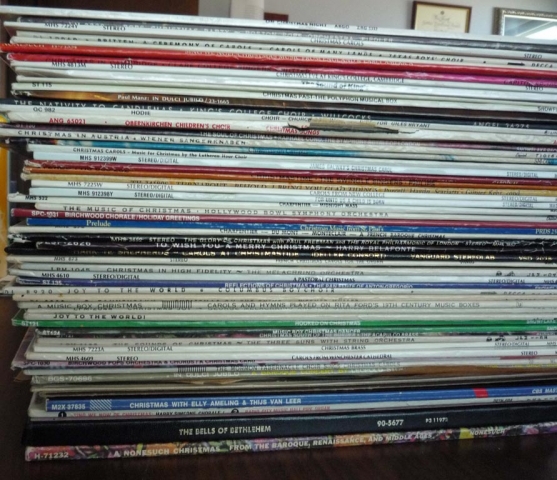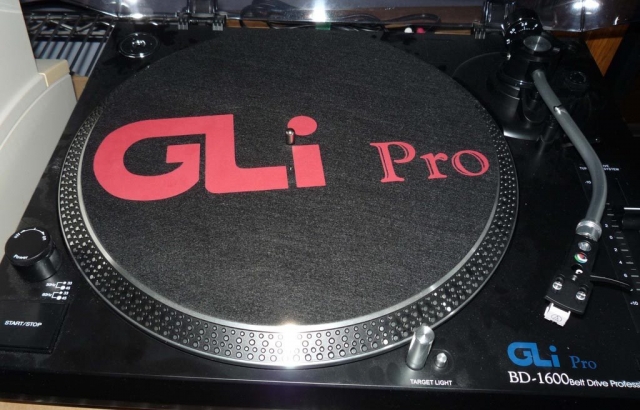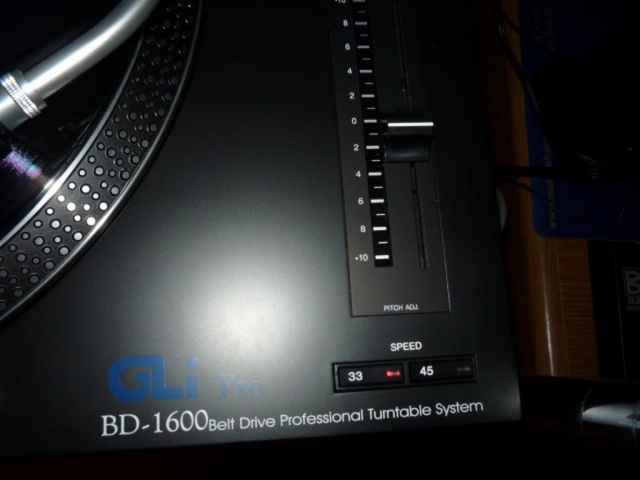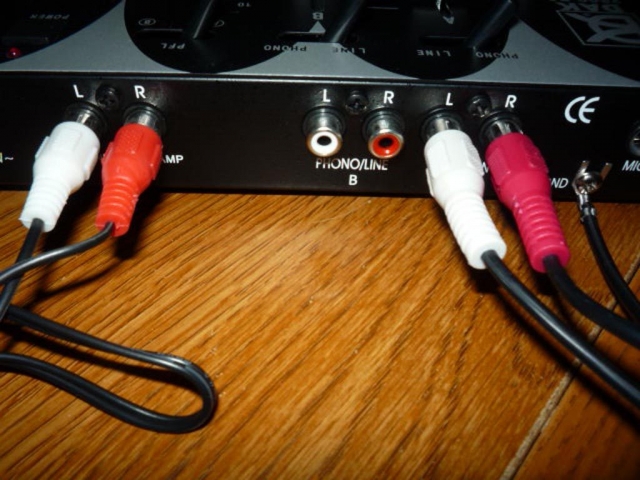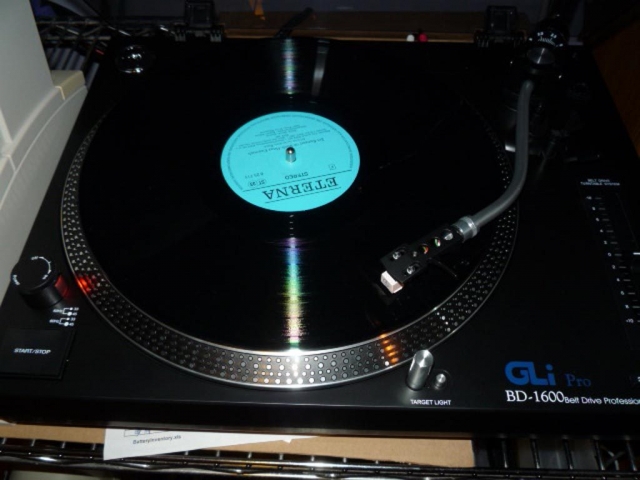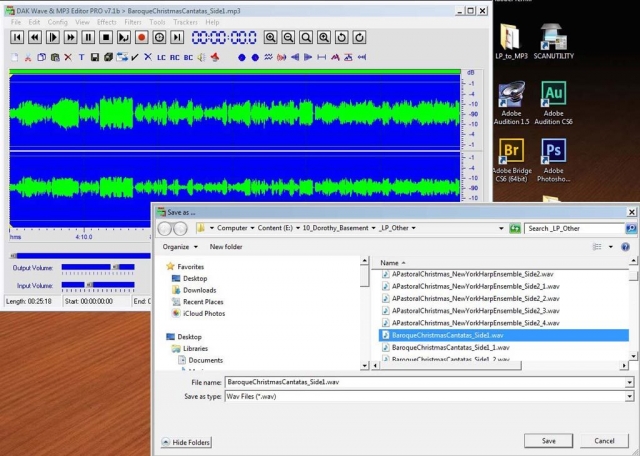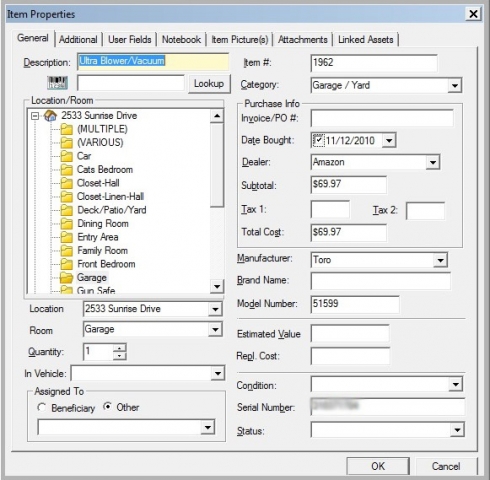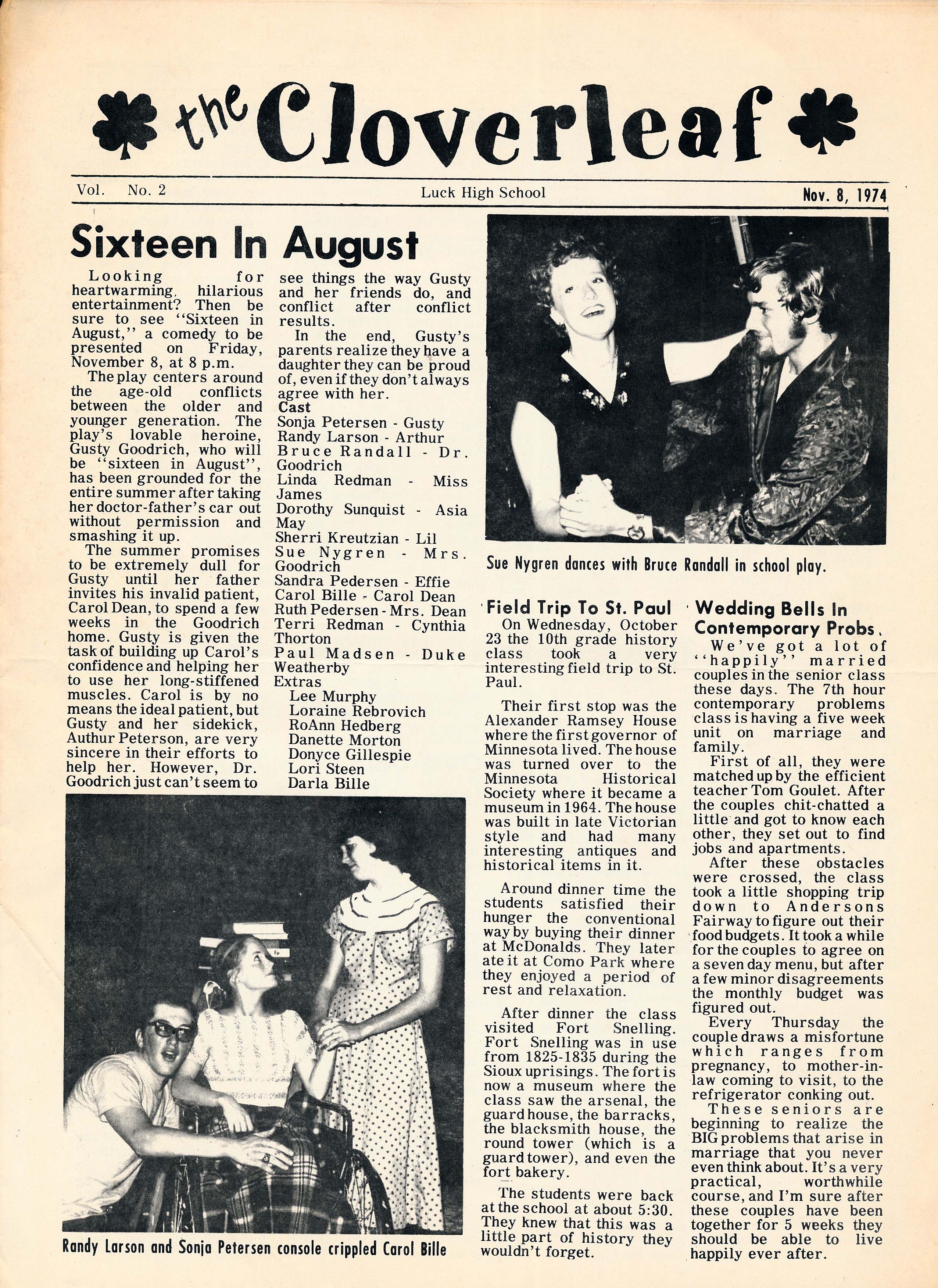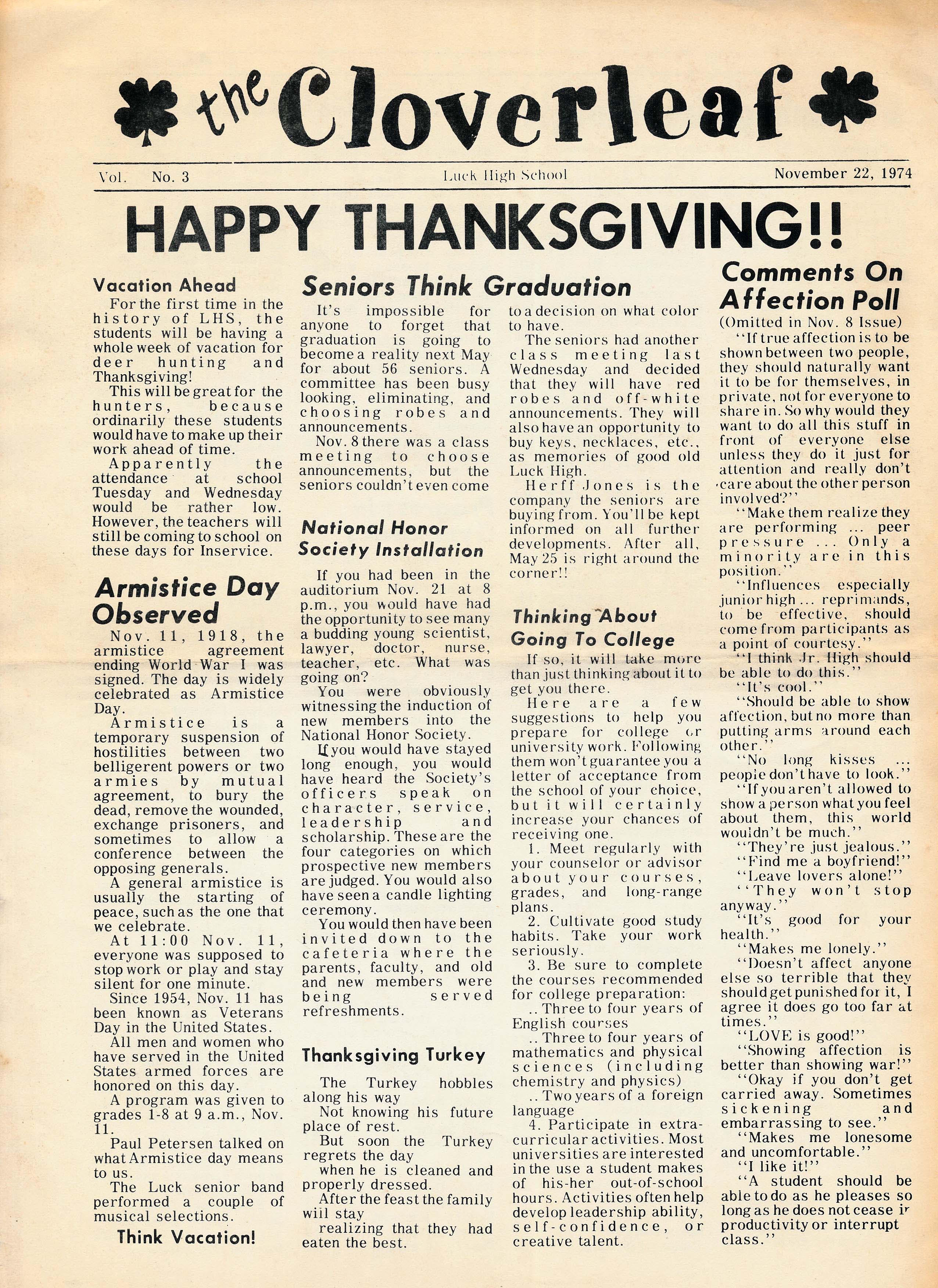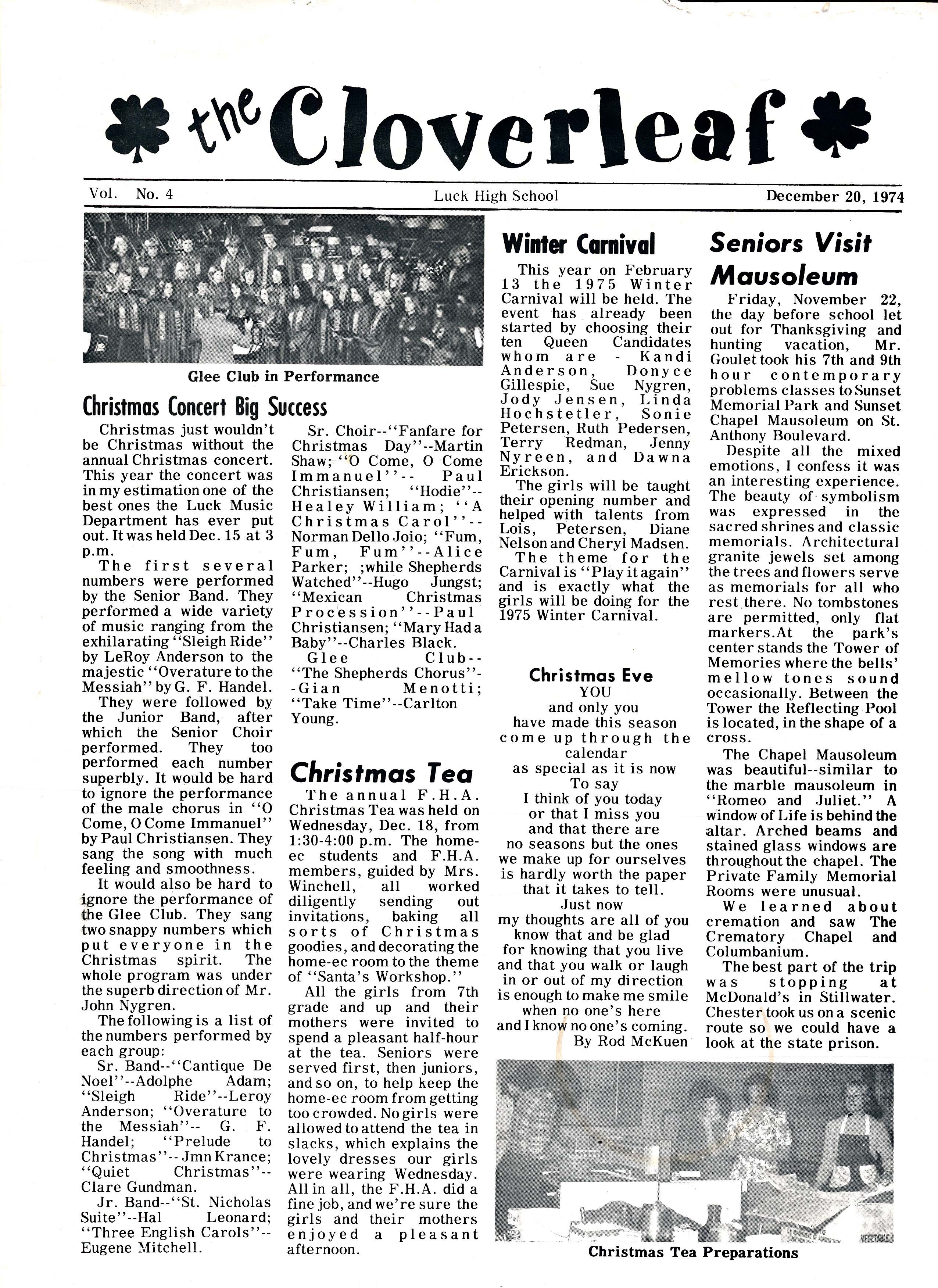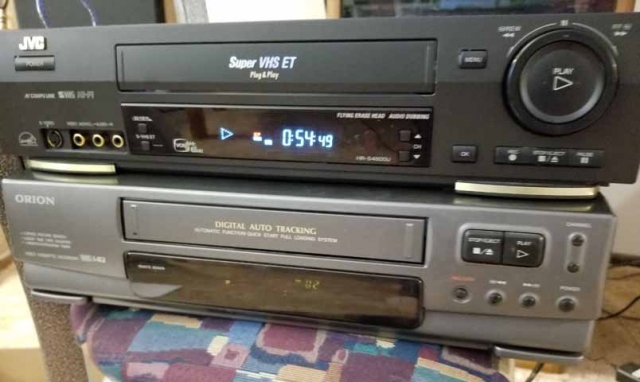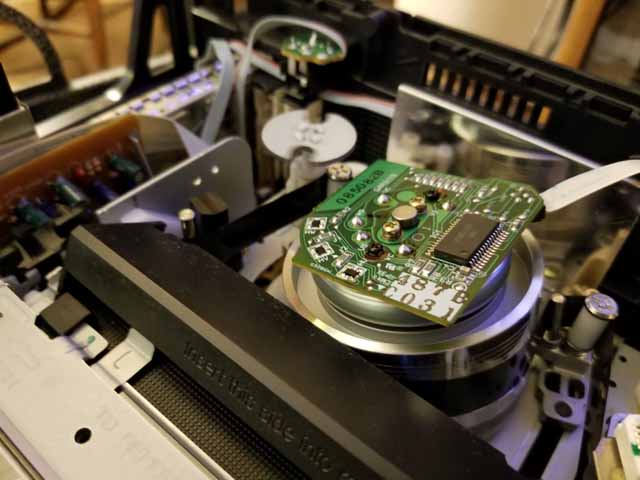Digitize
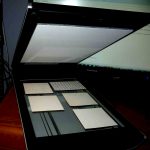
 One of the biggest tasks I have taken on as part of my personal genealogy project is digitizing old photos and documents. I am sure the count has surpassed 50,000 individual scans on my Canoscan 9000F Mark II scanner. I have also scanned documents for others who have sent them to me to digitize. Much of what is here are newsletters and yearbooks that I thought might be of interest to others.
One of the biggest tasks I have taken on as part of my personal genealogy project is digitizing old photos and documents. I am sure the count has surpassed 50,000 individual scans on my Canoscan 9000F Mark II scanner. I have also scanned documents for others who have sent them to me to digitize. Much of what is here are newsletters and yearbooks that I thought might be of interest to others.

One project was converting 100s of vinyl LPs from a relative's collection into mp3 files for listening on modern devices. It helped me appreciate genres of music that I would never had otherwise listened to.

Another project that required taking 1000s of digital photos was creating a home inventory database. We also attached scans of receipts. This will make it easy to generate a report for insurance purposes.
Digitized Photos
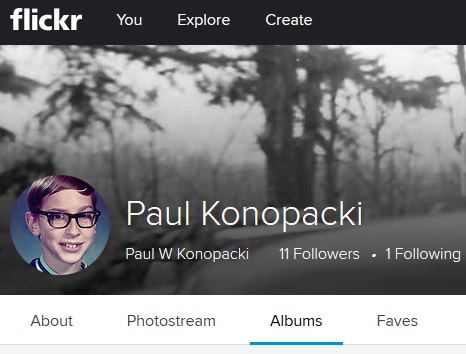
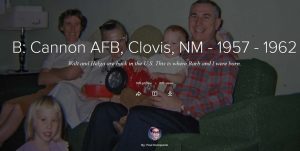 Below are groupings of photos I digitized that are related to my genealogy research project. They were negatives or prints saved in physical albums by my ancestors. The images are grouped by date, location, or content.
Below are groupings of photos I digitized that are related to my genealogy research project. They were negatives or prints saved in physical albums by my ancestors. The images are grouped by date, location, or content.Vinyl to mp3
Samples
Aunt Dorothy was interested in classical music. Auto Marjorie was interested in Jazz and Pop. Here are some random tracks from various genre.
Motivation
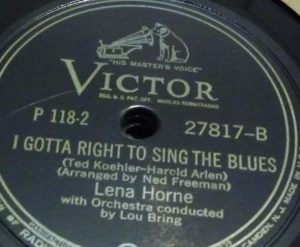 My sister-in-law likes to listen to classical music. She found out her aunts had a large collection of LPs in their house that were no longer being used. No one in the family had a good record player that could be used for playback. I had some free time on my hands and was looking for another project to work on. So I categorized all the LP albums by genre and artist and set up an analog-to-digital workflow to get all the songs digitized to WAV files (then to mp3 format for portable listening).
My sister-in-law likes to listen to classical music. She found out her aunts had a large collection of LPs in their house that were no longer being used. No one in the family had a good record player that could be used for playback. I had some free time on my hands and was looking for another project to work on. So I categorized all the LP albums by genre and artist and set up an analog-to-digital workflow to get all the songs digitized to WAV files (then to mp3 format for portable listening).
Hardware and Software
 First, I did research on what would be a good turntable, mixer and computer software to use. I chose a package deal of a BD-1600 GLI Pro belt-driven turntable, a DAK two-channel mixer, and a WAV editor by DAK. I already had audio editing software, but since the bundle came with instructions on using the DAK editor, I just stuck with it. The GLI Pro is excellent for the price. The arm is adjustable for angle and drag. The belt motor has a slider to adjust the turning rate based on strobe rate tuned to 33 1/3 and 45 rpm. The mixer is very simple to use. In fact, I did not mix two inputs; I just used it to amplify the signal out of the turntable and adjust the left/right channels as necessary. The output went into the computer that was running the audio editor in 'record' mode.
First, I did research on what would be a good turntable, mixer and computer software to use. I chose a package deal of a BD-1600 GLI Pro belt-driven turntable, a DAK two-channel mixer, and a WAV editor by DAK. I already had audio editing software, but since the bundle came with instructions on using the DAK editor, I just stuck with it. The GLI Pro is excellent for the price. The arm is adjustable for angle and drag. The belt motor has a slider to adjust the turning rate based on strobe rate tuned to 33 1/3 and 45 rpm. The mixer is very simple to use. In fact, I did not mix two inputs; I just used it to amplify the signal out of the turntable and adjust the left/right channels as necessary. The output went into the computer that was running the audio editor in 'record' mode.
Analog-to-Digital Workflow
 I would do a full conversion of about 50 LPs at a time, over a number of days. I would record each side of the record into a single WAV file. Next steps would be level the overall volume, get rid of clicks and pops, and split the file into individual tracks. Splitting was very time-consuming. The silence between tracks on pop records are usually easy to see. For classic music, sometimes silence is part of the performance, but can look like the end of a song. There were some cases an entire side of a record was made up of many songs, but one continuous performance. In those cases I did not do any splitting. The DAK audio software did have a feature where it was supposed to be able to locate track endings and automatically split a side into tracks. To make it work, you have to tweak settings that I found in the long run were not reliable, so I ended up just using the old-fashion visual method.
I would do a full conversion of about 50 LPs at a time, over a number of days. I would record each side of the record into a single WAV file. Next steps would be level the overall volume, get rid of clicks and pops, and split the file into individual tracks. Splitting was very time-consuming. The silence between tracks on pop records are usually easy to see. For classic music, sometimes silence is part of the performance, but can look like the end of a song. There were some cases an entire side of a record was made up of many songs, but one continuous performance. In those cases I did not do any splitting. The DAK audio software did have a feature where it was supposed to be able to locate track endings and automatically split a side into tracks. To make it work, you have to tweak settings that I found in the long run were not reliable, so I ended up just using the old-fashion visual method.
The file naming convention: __Side<1 or 2>_<Track#>. This would make it easy to sort and filter songs at a high-level. The next step was to convert the WAV files to MP3 format. This was easy to do in the audio editing software in batch mode.
mp3 Meta-tags
The final step was also time-consuming; add MP3 meta-tags with genre, date, album, artist, etc. information. I used both Windows Media Player and software called Mp3Tag to help with the task. Both of these could scan on-line song databases and populate the information automatically. For obscure LPs where there is no information found, the meta-tags were added manually. A twist to looking up meta-tags is that musical artists will produce different version for different target audiences. For instance, an album for a particular artist produced for Europe may have a different set of songs and song order than one produced for the United States.
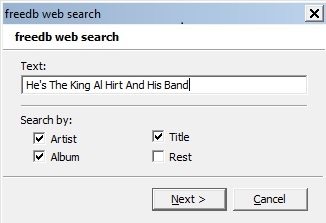
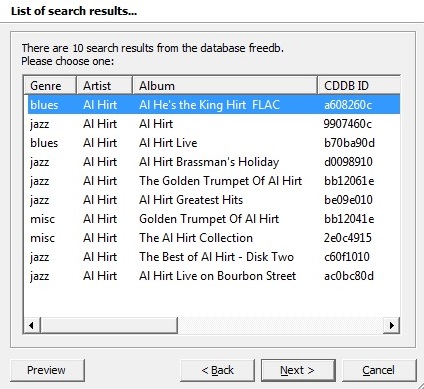
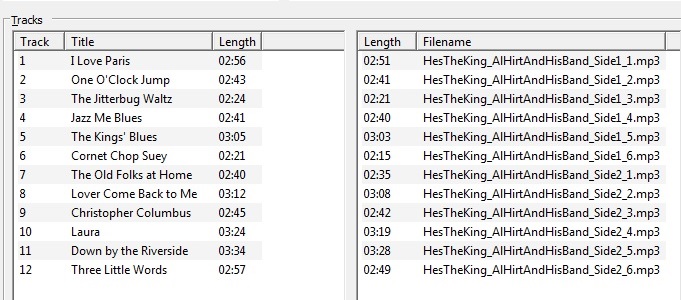
Workflow - Click an image to open lightbox viewer
General steps I took to do the work:
- Take camera photo of front and back of album cover. Same with sleeve if it has additional info. Keep with digitized tracks.
- Wipe each record with a damp cloth. Let dry before playing.
- Record each LP side to a separate WAV file in high quality. If any skips, adjust player arm and start again.
- Run each file through 'depopper' software to remove pops and scratches
- Split WAV files into separate tracks using audio editing software. Manual/visual method is most reliable, although time-consuming.
- Convert tracks from WAV into MP3 format. Some album-level meta-tags can be added here.
- Add Additional meta-tags using Windows Media Play, iTunes, or mp3tag software. They search on-line databases for information.
- Move original recorded WAV files to long-term archive storage in case recreation is needed.
- Move MP3 files to personal song catalog so they are included in searches when creating playlists
Was It Fun?
 I am a geek, so yes. I like to see how I can solve a task using technology. I feel I gave new life to the music because Aunt Dorothy could listen to the music again without having to deal with loading an LP onto a turntable. Also, new generations could now be exposed to the music to expand their knowledge and enjoy music they would not have otherwise listened to. This project allowed me to handle hardware I wouldn't have had a need to work with for any other reason. It has gone a long way to enhance my music appreciation.
I am a geek, so yes. I like to see how I can solve a task using technology. I feel I gave new life to the music because Aunt Dorothy could listen to the music again without having to deal with loading an LP onto a turntable. Also, new generations could now be exposed to the music to expand their knowledge and enjoy music they would not have otherwise listened to. This project allowed me to handle hardware I wouldn't have had a need to work with for any other reason. It has gone a long way to enhance my music appreciation.
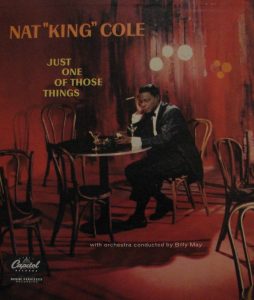 One young man asked me why go through the trouble of digitizing; why don't I just download the music from an on-line music service? First, I have more appreciation for the music by having a personal relationship with it; knowing it was listened to by a relative; spending time with each track trying to make the audio quality better. Second, the point of the project was not to track down the albums already digitized. Many would not have been digitized; they wouldn't necessarily have the same naming convention and meta-tags to conform to my existing music catalog. This project made me appreciate music genres that are outside of those I usually listen to.
One young man asked me why go through the trouble of digitizing; why don't I just download the music from an on-line music service? First, I have more appreciation for the music by having a personal relationship with it; knowing it was listened to by a relative; spending time with each track trying to make the audio quality better. Second, the point of the project was not to track down the albums already digitized. Many would not have been digitized; they wouldn't necessarily have the same naming convention and meta-tags to conform to my existing music catalog. This project made me appreciate music genres that are outside of those I usually listen to.
Home Inventory
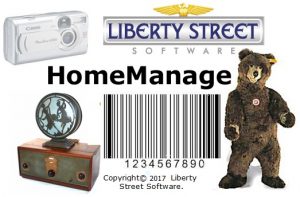
In 2007, we had a home invasion and lost thousands of dollars in possessions. We were lucky at that time that we had a fairly good home inventory database created using a program called 'Frostbow'. It was easy to print out images and values of what was taken. Years later, it was clear the inventory list was out-of-date. The inventory software we were using was no longer being supported and it was not very easy to use. I searched the internet for another software packages and chose one called 'Home Manage' from Liberty Street Software. It is a vast improvement in capabilities, but being as old as the product is, it still has issue that we have to work around. The data is stored in a Microsoft Access database, which I happened to know how to program. This allows me to do my own data manipulation and reporting outside of the inventory application.
 Item Database
Item Database
As of January, 2018, we have 2134 items in inventory. As we buy or acquire things that are not 'consumables', (food, toiletries, office supplies, etc.) we add them to inventory. As we give-away, sell, or throw away items, they are flagged as no longer in inventory, but are not removed so we can access their historical details. When an item is added, we designate the location, such as an address or physical building. We note how many of the items exist, what room it is normally in, what category it fits in, when, where, and how much it was purchased for, the item description (color, manufacturer, serial number, condition, value).
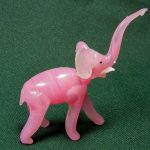 Each item is assigned a unique number in the database. We make it a habit of always attaching a photo of the item; either taking an image from the internet or taking our own picture of the physical item, itself. It is important to take a photo of the item from different sides, as well as labels and especially model and serial numbers. We regularly back up the database on external media and keep a rotating copy in our safe deposit box.
Each item is assigned a unique number in the database. We make it a habit of always attaching a photo of the item; either taking an image from the internet or taking our own picture of the physical item, itself. It is important to take a photo of the item from different sides, as well as labels and especially model and serial numbers. We regularly back up the database on external media and keep a rotating copy in our safe deposit box.
When we were first bringing our home inventory database up-to-date, we would print a report of items already in the database, one room at a time. We would go into that room and mark off items we see; add items to the database not in the list. If the item was in the database, but did not have an associated photo, we took a picture and attached it to the database record.
- Some Categories: Appliances, Linen, Medical, Tool, Vehicle, Wardrobe, Jewelry, Computer Hardware

- Some Rooms: Family Room, Kitchen, Garage, Master Bath, Guest Bath, Hall Closet, Office, Laundry Room
Item Example - Click an image to open lightbox viewer
Advice
If you don't have the time or resources to do you home inventory is a similar manner, at least walk around the outside and inside of the location and record a video. Take wide shots; close-ups; open up doors and drawers to show content. This is a quick way to show ownership and what items you had at a particular point in time.
"The Vanguard American" Newsletter
 Original publications by Holger and Dora Koch (1945-47)
Original publications by Holger and Dora Koch (1945-47)
"To the end of fostering mutual trust and understanding amongst members of our communities and to facilitate the experience and enjoyment of our common fund of inherited and created cultural values, the Guild humbly dedicates itself. It has no membership list and no by-laws, it has no patented cure for human ills, it aspires to no greater distinction than to be a part of man's struggle to become human. Various phases of the American community's history and function will be discussed in detail in coming issues of the Vanguard American. We are going to hear from many different sections of the country and, I hope, realize that our people are marvelously rich in our inheritance and in its variety of creative expression." - Holger J. Koch
Download all issues in a ZIP file (450MB)
3, "The New American", Holger J. Koch
4, "Vanguard Guild Objectives", Holger J. Koch
4, "The Town Square", Dora and Holger J. Koch
2, "The Universal Spirit", Holger Andersen, Viborg, South Dakota
3, "Intermezzo", Holger J. Koch
4, "The New Folk School", Mrs Thorvald Hansen, Luck, Wisconsin
2, "The Challenge of Teaching as a Profession", Miss Flora Rendleman, Audubon, Iowa
3, "For a Hundred Midnights", Ove R. Nielsen, Perth Amboy, New Jersey
2, "Out of the Mist", Holger J. Koch
3, "Religious Bigotry and the Good Life", L. C. Bundgaard, Withee, Wisconsin
4, "We, The People--", Holger J. Koch
2, "Americanization II", Aage Moller
2, "A Roman Soldier Reports to Pilate", Ove R. Nielsen
4, "Universal Peace (Melody - American)", Sigrud Pedersen, Ruthton, Minnesota
4, "Art and the People I", Holger J. Koch
2, "A New World in the Making", Harold Petersen, Ringsted, Iowa
3, "Americanization III", Aage Moller, Solvang, California
4, "Two-Fold is the Trail of the Emigrant", Holger J. Koch
4, "Conversion", Fransis Angermayer (Submitted by Mrs Frederikke Johansen, Luck, Wis.)
2, "As the Twig Is Bent - So the Tree Is Inclined", Cpl. Otto Larsen, Lowry Field, Colorado (From the Viborg "Vi_Ville.")
3, "The Next Step", Holger J. Koch
2, "The Rise and Decline of a Community", Professor A. C. Nielsen, Grand View College, Des Moines, Iowa
4, "Freedom in Education", Aage Moller, Solvang, California
5, "Solvang Summer", Ellen Nielsen, Fresno, California
7, "Harvest Idyll", Mildred Craig, 220 N. Vine, Tucson, Arizona
8, "Liberty Versus Faith", Thorvald T. L. Rasmussen, Solvang, California
8, "The Atomic Bomb", Harold Petersen, Ringsted, Iowa.
3, "This Church Cuts Through Prejudice", Thomas H. Simpson
4, "For Meditation", Dr. Howard Thurman
5, "San Francisco Spearhead", Mari Stottrup
5, "Freedom", Aage Moller, Solvang, California
6, "- - According to the Flesh", Holger J. Koch
7, "The Corn Song "Lyrics by Lalia Mitchell Thornton Music by Sylvia Schmidt Esbeck" (Poem reprinted by special permission of the Saturday Evening Post. Copyright 1945 by the Curtis Publishing Co.)
3, "Corruption at the Source", Cpl. Otto N. Larsen, Lowry Field, Colorado
3, "Baccalaureate Sermon", Aage Moller, Solvang, California
4, "A Folk-Life Fellowship", Mari Stottrup
5, "Bon Voyage, Arild, and Good Luck!", Arild
6, "For Meditation", Dr. Howard Thurman
6, "The Fellowship Group as the Way to a New Society", Arthur E. Morgan
6, "The Sermon on the Mount", Aage Moller
7, "According to the Spirit", Holger J. Koch
2, "Symposium At Christmas", Holger M. Andersen
3, "Study of History as the Basis of Education", (unknown)
4, "The Vanguard American in 1946", (unknown)
5, "For Meditation", Dr. Howard Thurman (Fellowship Church of All Peoples)
5, "Creative Teaching", (unknown)
5, "Hospital", Ellen Nielsen
7, "Quaker Meeting", Mari Stottrup (Letter from Mrs. Elizabeth Marsh Jensen)
7, "One Year", Dora and Holger J. Koch
1, "What is Organic Education?", Mrs. Marietta Johnson
2, "History of the Organic School" (unknown)
2, "Fairhope", (unknown)
3, "The Organic School: Nursery Through High School", (unknown)
3, "Principles of Organic Education", Marietta Johnson (Exerpts from 'Thirty Years With an Idea' - unpublished book)
5, "Teachers and Organic Education", Marietta Johnson (Exerpts from 'Thirty Years With an Idea' - unpublished book)
7, "A School of Tomorrow", John Dewey (Condensed from a Chapter of 'Schools of Tomorrow')
8, "What We Want Is Not Here", Dr. Wm . E. Zeuch (Extracts from Address at Organic Graduation May 15, 1942)
9, "A Curriculum for the School of Tomorrow", Kenneth L. Patton
11, "The Future of the Organic School", Kenneth L. Patton
12, "A WORD FROM THE EDITORS", (Holger and Dora Koch)
3, "The Obligation of a Trust", Leif A. Kirkegaard, Rushford, Minnesota
3, "Without Money", Aage Moller, Solvang, California
4, "The Loom of Living", Nadjeschda L. Overgaard
4, "Rebirth of Death of a Vision", Thorvald Rasmussen, Solvang, California
5, "Toward Church Consolidation", Harold Petersen, Ringsted, Iowa
5, "For Meditation", Dr. Howard Thurman
6, "On Lincoln's Birthday", Holger J. Koch
6, "The Body of This Death", Ellen Nielsen, Fresno, California
2, "Small People's Eyes", Synnove Larsen Baasch, Washington Island, Wisconsin
4, "Pattern on the Loom", Dora L. Koch
6, "Salt on a Bird Tale"", Holger M. Andersen, Viborg, S.D.
6, "To Be or Not to Be a Christian", Marie E. Hansen
7, "Thirty Years with an Idea - CHAPTER IV LITTLE CHILDREN", Mrs Marietta Johnson
2, "Ackworth Origins", Helen Stevenson
4, "Pacific Ackworth Associates", (unknown)
5, "An Adventure in Faith", Edwin and Molly Mergenroth, Directors
6, "And a Little Child Shall Lead Them", Holger J. Koch
7, "Earth Subdued", Einer B. Dixen, 2030 Lincoln Avenue, Pasadena, California
3, "Children Just Like Each Other", Malcolm Thurburn, Los Angeles, California
3, "Thirty Years With an Idea IV. LITTLE CHILDREN (continued)", Marietta Johnson
5, "The Loom of Living", Nadjeschda Overgaard, Kimballton, Iowa
6, "In the Wake of Prairie Schooners", Holger J. Koch
8, "For Meditation", Howard Thurman
2, "Thirty Years With an Idea VI. LITTLE CHILDREN (Concluded)", Mrs. Marietta Johnson
3, "For Orientation", Quoted from Community Service News
4, "The Loom of Living - INDIAN ART", Dora L. Koch
6, "In the Wake of Prairie Schooners (concluded)", Holger J. Koch
8, "Fairhope Organic Has New Principal", Edgar E. Ritter (from INTEGRATION)
3, "The Young People and Their Community", Harold Petersen
5, "A G. I.'s Journey", Helge Stottrup
7, "For Meditation", Dr. Howard Thurman
7, "Greetings from C. Arild Olsen", C. Arild Olsen Berlin, 2 June 1946
3, "Potpourri - - - ?", Herluf Madsen, Palo Alto, California
4, "The Rising Tide", Holger J. Koch
5, "The Last Semester Was the Best", Mabel Hoyt, Sioux City, Iowa
6, "Nothing", Aage Moller, Solvang, California
7, "A G. I.'s Journey (Continued.)", Helge Stottrup
4, "From the MainCoast", Blanche Dow (Song or poem)
6, "Half a Prayer (Continued from Page 3)", Esther Harlan
7, "A G. I.'s Journey (Concluded.)", Helge Stottrup
3, "Autumn Symphony", Mabel Hoyt
3, "American Idealism In Europe's Reality", C. Sverre Norborg
5, "Receptivity", (unknown)
5, "Midwest Sanctuary" ,Th. Rasmussen
6, "Concerning Gandhi I", Esther Harlan
4, "Into the Future", Holger J. Koch
5, "Concerning Gandhi II", Esther Harlan
4, "The Woodsmen", Thorvald T. L. Rassmussen
5, "And Thus Unto the Cow -- I Bow", Holger and Dora Koch
5, "All We Ask", Holger and Dora Koch
5, "Things I Own", Mabel Hoyt
5, "Concerning Gandhi III", Esther Harlan
2, "Comfort and Crisis", Holger J. Koch
4, "Play", Elaine Trukken
6, "A Word About the Folk School, "Enok Mortensen"
7, "Lilienthal on Democracy", (unknown)
7, "The Community Drama In Adult Education", Baker Brownell, Director of The Montana Study, University of Montana, Missoula, Montana (From The Teacher's College Journal)
3, "Work", Harold Petersen (From the "Messenger")
4, "Conscientious Objection", Esther Harlan
6, "Promises", Mabel I. Hoyt
6, "Economy", Aage Moller
7, "No Compromise of Principle!, Holger J. Koch
8, "Pancakes and Purposes or RECIPE FOR A GOOD SOCIETY", W. Clay Marks
3, "The Vanguard American Moves", Holger J. Koch
3, "Vigilance for Life, Hans H. Baasch
4, "When the Wild Geese Came to the San Bernardino Mountains", Einer B. Dixen
5, "A Cubit to Your Stature", Holger J. Koch
6, "Italian Hill Town", Irwin Abrams
7, "The Montana Study", Baker Brownell, Director, Montana Study Professor of Philosophy, Northwestern Univeristy, On Leave at Montana State University, Missoula
1972
1973
1974
1975
1976
1977
1978
Luck High School "Horseshoe" Yearbook
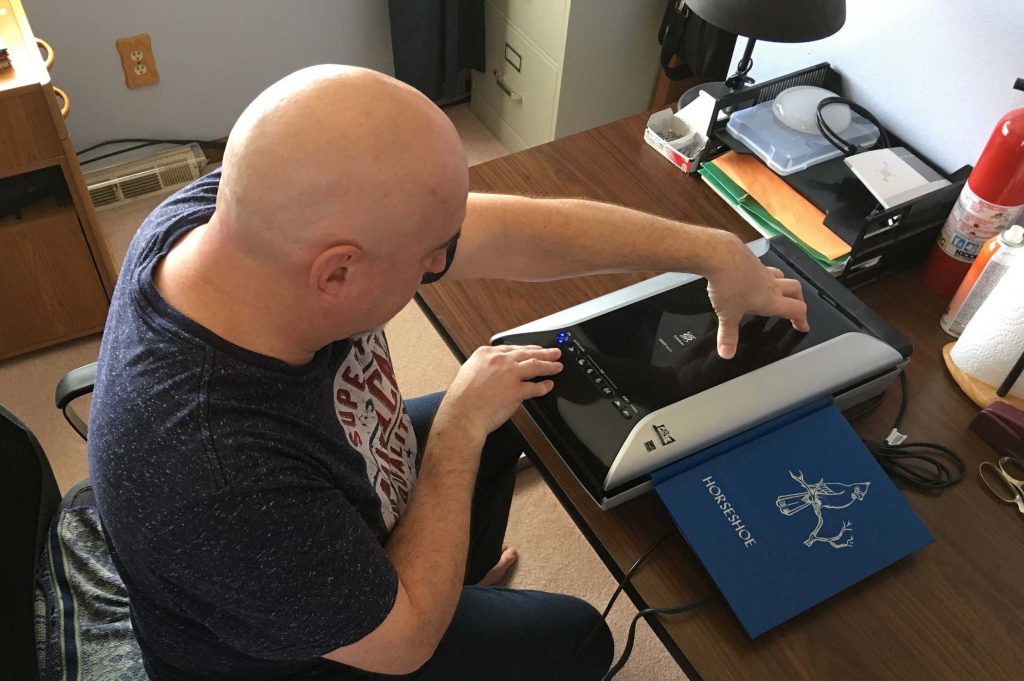
Some of these are issues from my personal collection from when I went to high school at LHS. Others are from issues loaned to me by others. Each page is typically scanned to .TIF at 300dpi. Then one PDF file is created from all the pages in a yearbook. Where years are missing, I have no document for that year. In some cases, more than one school year was published by the school in a single yearbook.
Click on a yearbook thumbnail to see a larger image.
1920
1930
1950
1960
1970
1980
Elk Horn High School "Antler" Yearbook
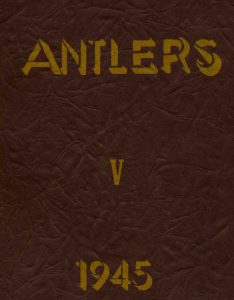 My mother, aunt, and uncle all graduated from Elk Horn High School in Elk Horn, Iowa. Even though they lived in the town of Kimballton a few miles a way, it did not have a full 4-year high school in the early 1940s. These are school annuals that they kept over the years. My mom graduated in 1945. That year she was the yearbook photographer and class valedictorian. I have a copy of the prints for some of the photos in the 1945 yearbook.
My mother, aunt, and uncle all graduated from Elk Horn High School in Elk Horn, Iowa. Even though they lived in the town of Kimballton a few miles a way, it did not have a full 4-year high school in the early 1940s. These are school annuals that they kept over the years. My mom graduated in 1945. That year she was the yearbook photographer and class valedictorian. I have a copy of the prints for some of the photos in the 1945 yearbook.
Ela Koch - 1941
Vern Koch - 1943
Helga Koch - 1945
Each page is typically scanned to .TIF at 300dpi. Then one PDF file is created from all the pages in a yearbook. Where years are missing, I have no document for that year. Click on an thumbnail to see a larger image.
A Year With W. F. P.
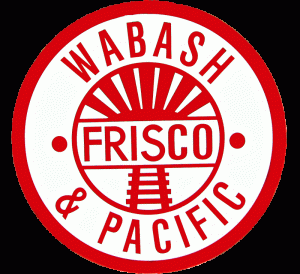
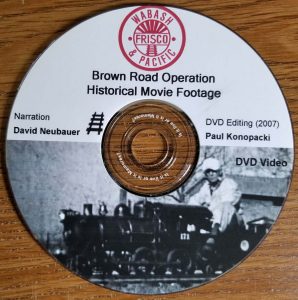
In 2006, I had just started my videography hobby. On my way back from recording a geocaching event, my wife and I stopped by Glenoe, Missouri where the W. F. P 12" gauge railroad is located. The trains, stock and track are managed by volunteers and give the public rides every Sunday between May and October.
I approached the members and asked if they would allow me to voluntarily capture video of how the organization works and get clips of the public riding the trains. They embraced the idea. So for every Sunday during the 2006 season, I was there with my video camera getting interviews, watching how they prepared the steam engines to run, and get some really neat footage while riding the train along the Al Foster trail, next to the Meramec River.
After the end of the season, I created a video compilation DVD which was sold at the W. F. P. souvenir table! Interestingly enough, years later a co-worker at my place of work ask me if I was they guy who created the DVD. It turns out he bought a copy and his young son watched it over and over and over.
Preserving History
While hanging out with the W. F. P. volunteers, I learned a lot about the history of the organization. The entire operation started in 1939 at Brown Road, near the St. Louis airport. It was later moved to Glencoe, Missouri. Some of the volunteers at Glencoe were teenage volunteers when it was at Brown Road. One of them had old Hi-8 video tapes from Brown Road and Glencoe. Unfortunately, those tapes did not have an audio track. I loaned a tape player to David Neubauer and told him to record narration from his memory as he watched the tapes back. I took the media and digitized it in Adobe Premiere software, then burned the results to DVD to give to the organization. I also uploaded the content to YouTube.
YouTube Playlist - W.F.P. - Historical Footage from Brown Road and Glencoe
YouTube Playlist - W.F.P. - 2006 Operational Year
Memories on Tape
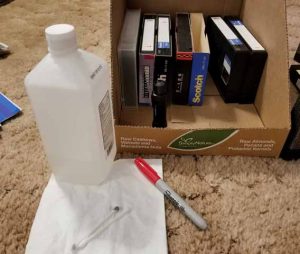
Last week I was in the family room with my wife looking through 'stuff'. I noticed a box of eight VCR tapes that did not look familiar. She said they belonged to her mother and wanted to see if there was anything on them worth keeping. They had been sitting on the floor for quite awhile and she never mentioned them to me. Challenge accepted!
We still had an old S-VHS player so one Saturday I dragged it out and popped in one of the tapes. It whirred, then a few seconds later it shut off. Tried it again and the same thing. Rats! This was going to spoil my digitization project. So I ran into town to the recycle center and bought an old VCR tape player for $5. There was no S-Video port and only a mono audio port. But at this point, I just wanted to get an idea what was on the tapes.
When I got home, I ordered a video conversion dongle from Amazon to be delivered the next day. I thought there was one in the house via an old video camera, but I had sold it a few years ago.
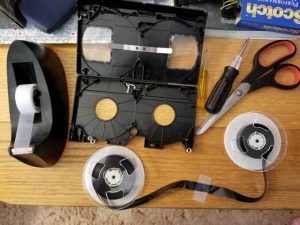
While I played back VCR contents on the recycled player, I cleaned and poked at the mechanisms of the S-VHS machine. Little by little I was able to get the parts moving again. It wasn't perfect because sometimes instead of playing the tape it would fast forward it; or the rewind function would not work. Eventually I got it to work as expected, long enough to watch all tape content and log it into a spreadsheet. It was mostly programs taped from PBS ("Wild America") and some President Clinton State of the Union addresses. But there were two from my wife's family that had original content of her nieces from when they were growing up.
When the video conversion dongle arrived, I hooked it up, installed the software on my laptop and started recording. Obviously if there was a tape full of 4 hours of content it would take four hours to record. I set the format to MPEG-2 and when the capture file size got to about 2GB I created a new file. I copied all the files to my video editing PC and started to clean up the footage using Adobe Premiere Pro. Trimmed the bad stuff, did color corrections, some stabilization and removal of noise. Saved the results to .mp4 files for review by my wife. She was delighted because she had never seen the clips before.
Essentially the digitization project is over. I do want to mention that during playback, tape broke on four of the eight tapes. I took the five screws out of the cartridge and followed directions from a YouTube video on how to Scotch-tape the tape back together. Worked good enough to allow all tapes to play from beginning to end and rewind without breaking again.
